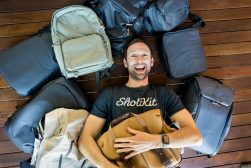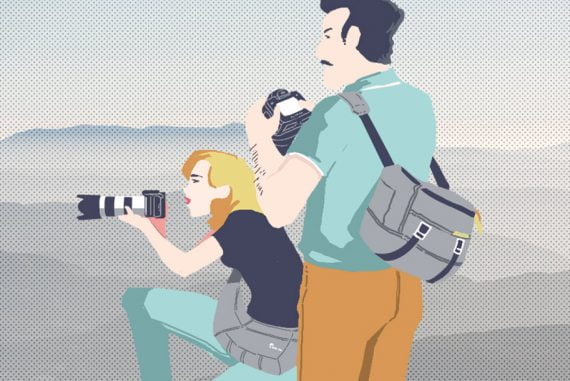
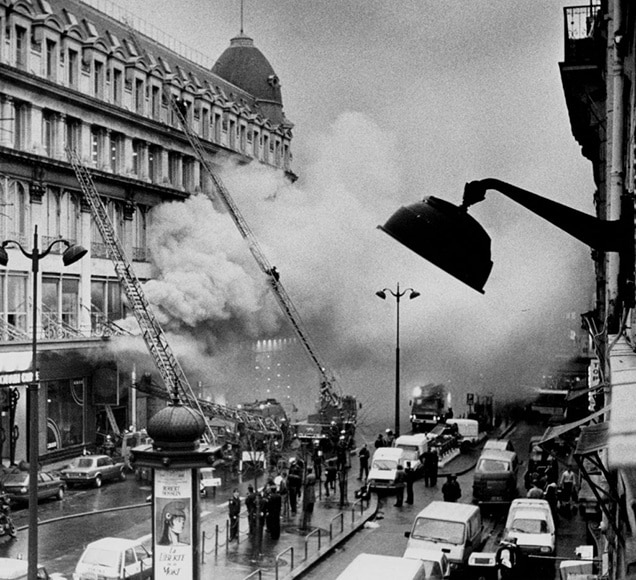

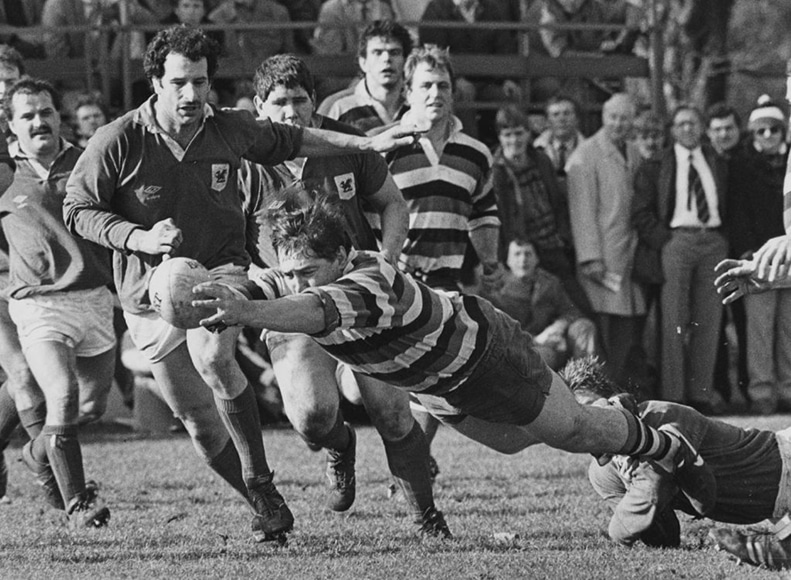
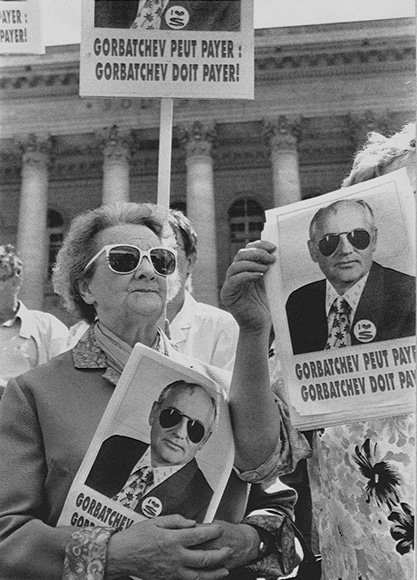
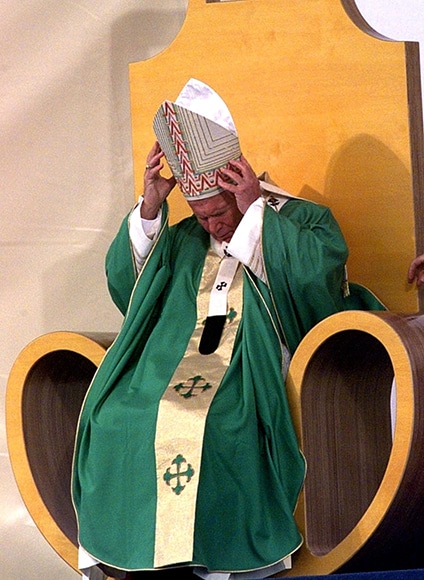


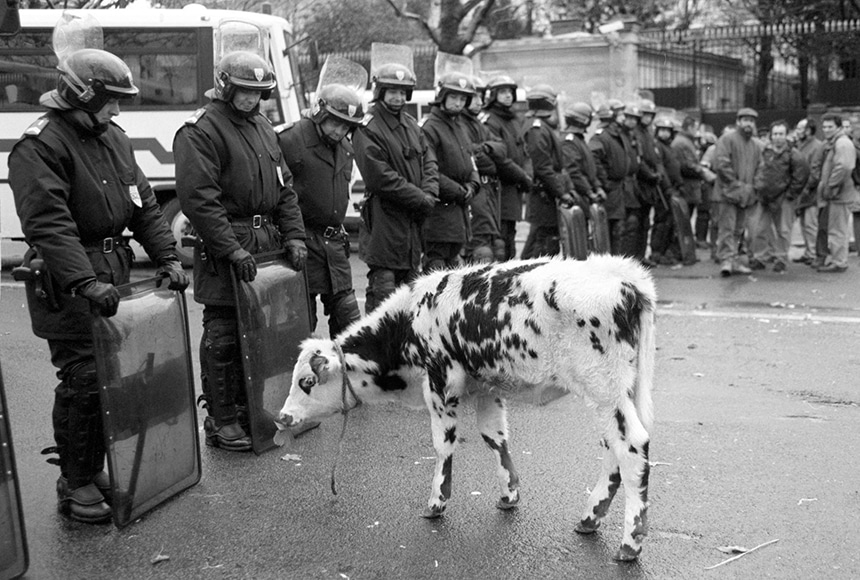


Gareth Watkins
Photojournalism | Last Updated: January 25, 2021
My name is Gareth Watkins, I am a Franco-British photographer currently living near Reims in France. I started out photography back in the early 80’s after reading French literature at University.
In my early days, I mostly tried to capture street type pictures, in London, where I was living at the time. I was hugely influenced by some of the top documentary photographers at the time such as Don McCullin, W. Eugene Smith, Elliot Erwitt, Bruce Davidson, Henri Cartier-Bresson, and spent my time wandering the streets looking for pictures.
I quickly realised if I was to work in photography, I would have to move into more general photojournalism. Thus, from the mid 1980’s, I started working for a number of newspapers and agencies in London, before joining Reuters News Agency as a staff photographer in Paris in 1987. Here I covered many local and international stories for over 15 years.
Since leaving Reuters, I have started to shoot my own long-term projects, documenting the region in France where I live in black & white. These projects I edit into photobooks and magazines via Blurb.
Gear
During my career, I have used a whole range of film and digital cameras. In the 1980’s I bought my first proper camera, a Nikon FE. I subsequently used, company issued, F3’s and FM2’s before moving onto the Canon EOS system in the early 90’s.
With its better zooms and excellent autofocus, it was the photojournalist camera of choice for a number of years.
As an agency photographer where speed was essential, we were naturally early adopters of the first EOS1 digital bodies. I stayed with Canon up until the 5D III recently, when the weight of the gear was just too much for my needs.
Basically, I needed a couple of light, high quality cameras that would allow me to work quickly in all conditions. I switched to the Fuji X series of cameras and fixed lenses about three years ago.
Cameras
Fujifilm X-Pro2 – My main motivation for moving to Fuji was the size of the camera. They are small, light, but also very fast to use, with excellent autofocus and very good low light performance. I must say also that I love the retro styling, with dials and aperture rings. It took me back to my first Nikon FE camera.
The saving in weight is considerable and having used them on occasions on jobs with my Canon 5D III, I cannot see any significant difference in quality. In fact, I prefer the Fuji raw files to work with.
Lenses
In order to keep weight down, I have opted for the fixed focal length X Series lenses, rather than the zooms. Not only are they smaller, lighter and have faster apertures, but they have excellent weather sealing.
Fujifilm 23mm f/2 – I carry one camera fitted with a 23mm f2 (which gives me a 35mm full frame equivalent) at all times. I love the field of view, which is just wide enough for most applications. It is also faster to focus and quieter than its 1.4 cousin.
Fujifilm 50mm f2 – On a second camera body I fit the 50mm f2 (75mm equivalent) which is a very nice and very sharp short telephoto. I find it not only good for portraits but a very nice lens in the street if one cannot get close enough for a 23mm to work.
I do have the 18mm f2 and 35mm f2 also, but these are rarely used these days.
Lights/Triggers
I rarely use any lighting preferring to use available light where I can. The XPro2’s are very good in low light, even with the f2 lenses, and can be pushed to high ISO’s and still give acceptable results. On rare occasions, I do use a flash I have, a small GODOX TT350 and X1T trigger.
Bags/Straps
Like most photographers, I imagine I have owned and own a whole host of camera bags, to suit various occasions and needs, from small messenger bags to backpacks. In the 1980’s I got my first Billingham (which I still have), before moving onto the standard 80’s and 90’s photojournalist’s bag, the Domke F2. I had a couple of these as well as the smaller F3X.
More recently I had been using a Billingham Hadley Pro, but really wanted a more discrete bag that did not scream ‘camera bag’. The Billingham’s are great bags, but they look expensive (which they are) and I think most people know them as camera bags.
So upon searching the internet for a less obvious option, I came across the Wotancraft line of bags from Taiwan. I opted for the Trooper medium, which is a high-quality bag, can take all my kit and various bits and pieces, like batteries, SD cards, Raybans, wallet and phone.
I feel it looks just like many messenger bags out there, and as it happens that is pretty much what I use it for, except I have a pair of Xpro2’s lodged inside too. I have no affiliation with the brand but have been very impressed by the build quality and the practicality.
Regarding straps, I use the Fuji supplied strap on one body and a nice and cheap brown leather one I got on the internet, on the other. I like to have one long strap and one shorter, so the cameras don’t bang together if I put them on the same shoulder, or both around my neck.
I’m still looking for a nice long brown leather strap in the 140 cm length, most I have found are 90cm.
Hardware & Software
Software wise, I’ve switched to Capture One since going to Fuji. I find the program renders the Fuji raw files far better than Lightroom and gives me a lot of latitude. I don’t use the Fuji simulations in camera but prefer to shoot raw and apply them in Capture One, using mostly Acros with a red filter. I can also export the files into Photoshop which I do to add a white border for social media.
Misc.
I also carry several Fuji batteries in one of the hidden outside pockets on the Trooper bag, as these cameras don’t have great battery life. The right pocket is fresh batteries, left pocket used. I keep a Pelican style SD card case in the bag, with a few new cards. I never re-use cards as I keep them as a further back up to my pictures. Once they are full, I archive them. I still have SD cards from over 10 years ago that still work.
At present, I carry face masks and hand gel (Covid oblige), as well as my Raybans, checkbook, wallet and phone. Plus pens, Swiss army knife and business cards in a case.
Final Words
My current work, although it has moved away from mainstream photojournalism, uses a journalistic approach to document life here in rural France.
Without the work of previous generations of photographers showing us what life was like, we would be missing a lot of what the photographic medium has to offer us about our past generations. I feel it is important to continue this type of work.
I also feel it is important to print one’s work. In the past we made prints in the darkroom, work was published in magazines and newspapers. Today much work is only being shown online, which I feel is a real shame.
Using Blurb I self-publish the projects that I have set for myself. This might be the life on my local canal, to the vestiges of the former railway network that are still visible in the region.
I enjoy seeing the images printed and even if they are not exhibition quality (but what newspaper or magazine ever was) they give me a lasting document of my work and not just a brief post on Instagram.
www.gwenllyn.com | @garethwatkins02

Check out these 8 essential tools to help you succeed as a professional photographer.
Includes limited-time discounts.







